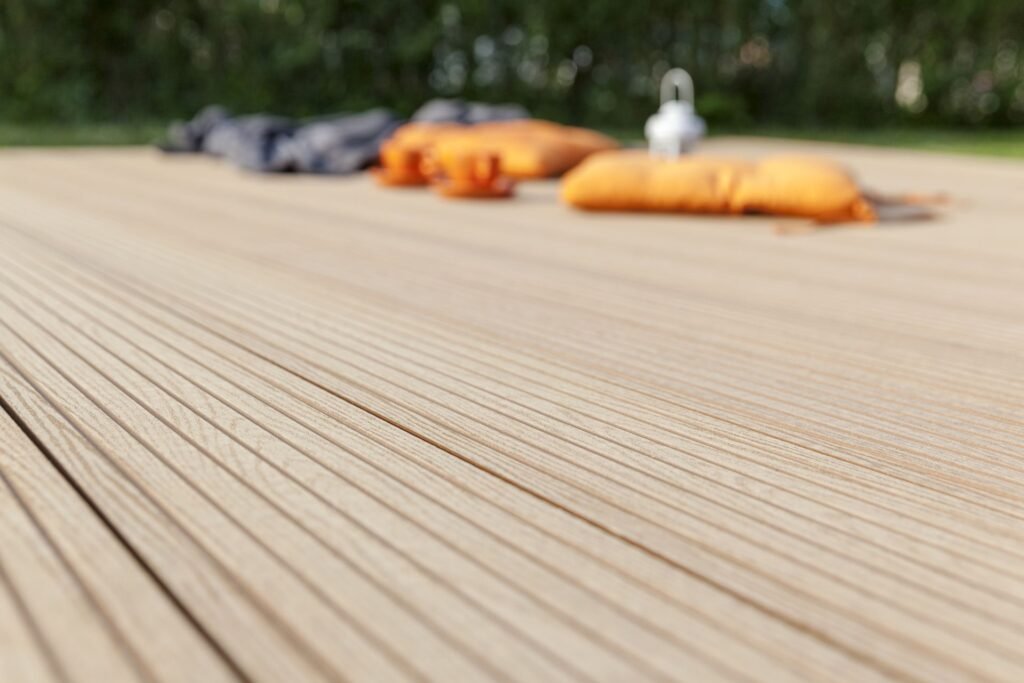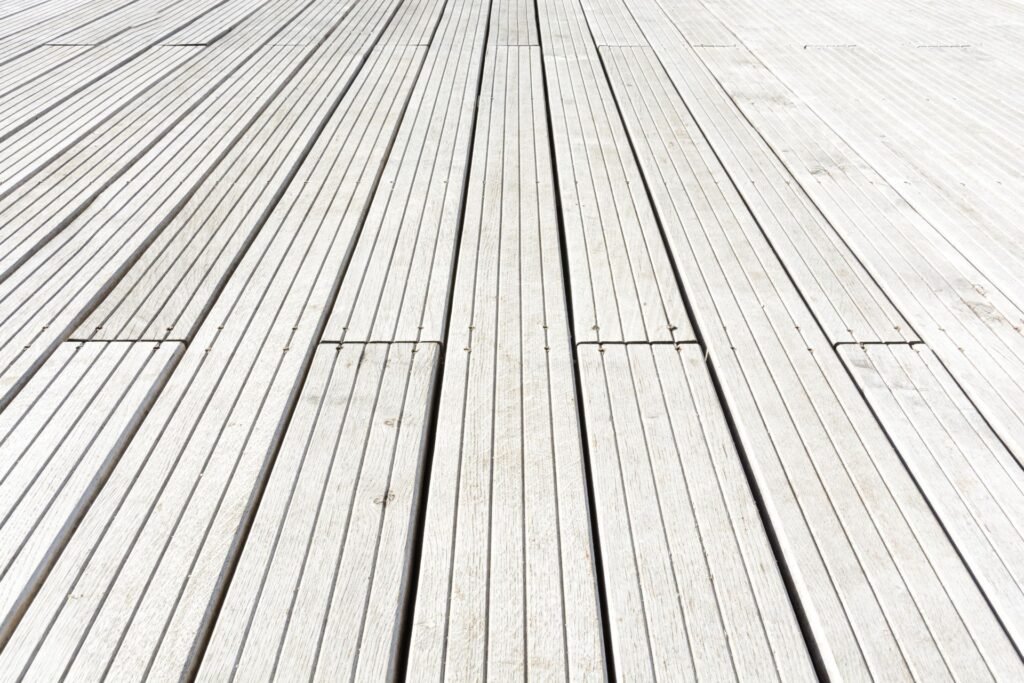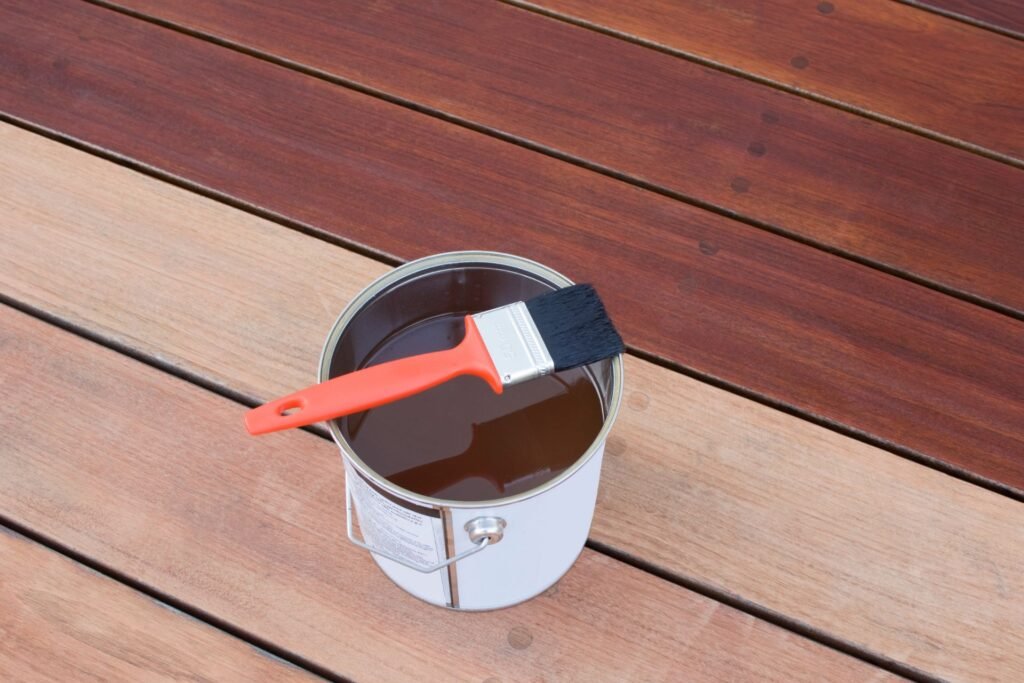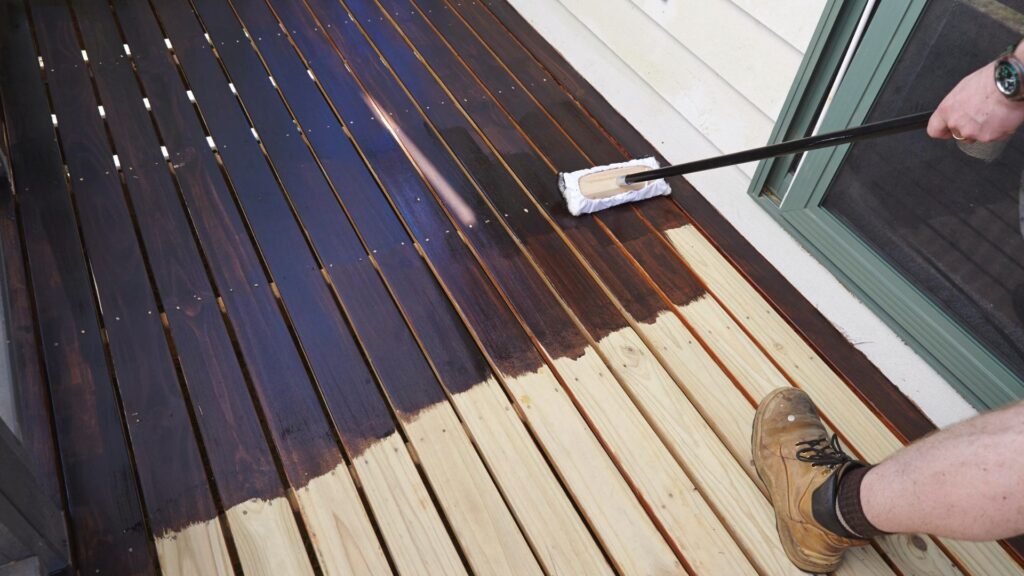Ultimate Guide To Best Decking Oil Australia
Welcome to our ultimate guide on finding the best decking oil in Australia to protect and enhance your deck. Whether you’re dealing with harsh sunlight, unexpected rain showers, or just the wear and tear of daily life, the right decking oil can make all the difference. In this guide, we’ll delve into the various options available, helping you understand the key differences between water-based and oil-based products, the benefits they offer, and how to choose the perfect one for your wooden deck. By the end of this post, you’ll be equipped with all the information you need to make an informed decision, ensuring your deck looks great and stands up to the elements for years to come.
When selecting the best decking oil for your wooden deck in Australia, consider both water-based and oil-based options. Water-based oils dry faster and are easier to clean up, while oil-based oils penetrate deeper for longer-lasting protection. Factors like the type of wood, climate conditions, and desired finish should influence your decision. Regular maintenance with the right oil will protect your deck from weathering, enhance its natural beauty, and extend its lifespan. Always prepare the surface properly and apply it according to the manufacturer’s instructions for optimal results.
Understanding Decking Oil
If you’re considering ways to enhance and protect your outdoor wooden deck, understanding the basics of decking oil is essential. This comprehensive guide will help you grasp what decking oil is, how it differs from stains and paints, and why it could be the best choice for maintaining your deck’s beauty and longevity.
What is Decking Oil?
Decking oil is a specialized product designed to penetrate deep into the wood of your deck to provide protection and enhance its natural beauty. Unlike surface coatings like paint, decking oil seeps into the wood fibers, nourishing and strengthening the material from within. This method of treatment not only helps preserve the texture and grain of the wood but also aids in its overall health and durability.
Differences Between Decking Oil, Stains, and Paints
Understanding the differences between decking oil, stains, and paints can help you make the best choice for your decking needs:
Decking Oil: Decking oils are designed to penetrate the wood, providing deep nourishment and protection. They help maintain the natural look of the wood, offering a subtle enhancement of the grain and texture.
Stains: Like oil, stains penetrate the wood but usually contain pigments that alter the wood’s color while also offering protection. Stains can range from transparent to solid, depending on the amount of pigment and the desired opacity.
Paints: Paints sit on the surface of the wood, forming a thick, protective layer that covers the natural grain and texture. While they offer the highest level of color customization and surface protection, they can peel and crack over time, requiring more maintenance.
Benefits of Using Decking Oil
Choosing decking oil for your deck brings several advantages, primarily related to the protection and enhancement of the wood:
Protection Against Weather Elements: One of the primary benefits of decking oil is its ability to protect the wood from damaging weather elements. The oil repels water, protecting the deck from rain and moisture, which can lead to rot and decay. Additionally, many decking oils contain UV blockers that help prevent the sun’s harsh rays from fading and drying out the wood.
Enhancement of Wood’s Natural Beauty: Decking oil is known for bringing out the natural beauty of the wood. It enhances the grain and texture, giving the deck a vibrant, rich tone without covering up its natural characteristics. This can be particularly appealing for those who wish to keep the organic look of their decks.
Prevention of Cracking, Splintering, and Warping: Regular application of decking oil can significantly reduce the risk of wood damage such as cracking, splintering, and warping. By penetrating deep into the wood, the oil keeps the wood fibers flexible and resilient, helping to maintain the structure and integrity of your deck over time.
Choosing the right decking oil and applying it correctly can extend the life of your deck and enhance its natural beauty, making it a worthy investment for any homeowner. Whether you’re installing a new deck or maintaining an existing one, the benefits of decking oil are clear: it offers superior protection while enhancing the wood’s natural charm.
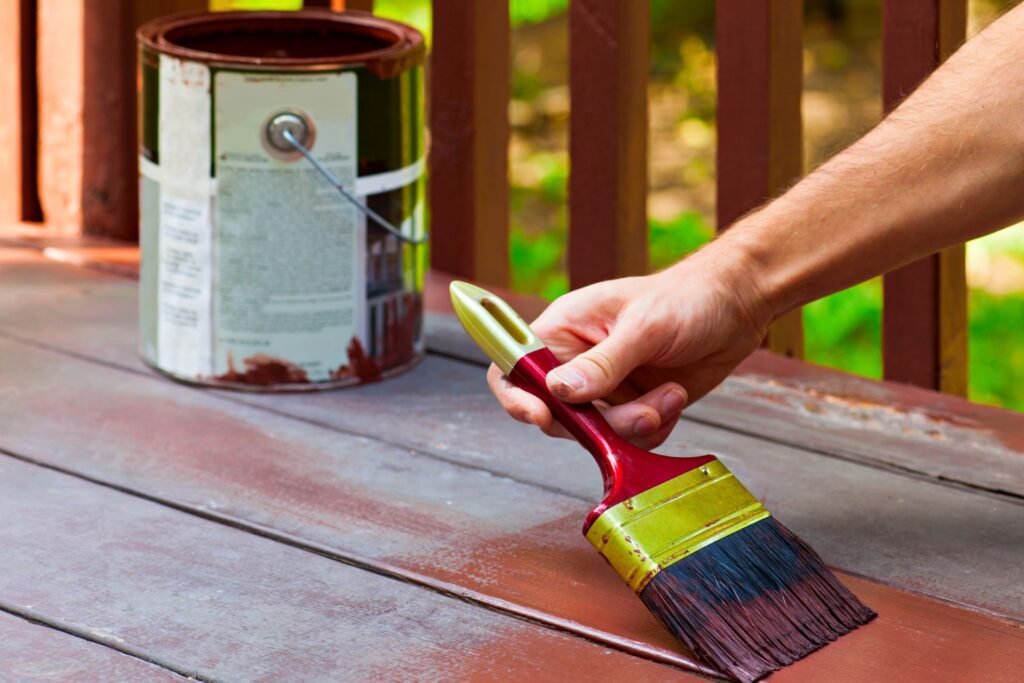
Types Of Decking Oils Available In Australia
When it comes to maintaining and protecting your outdoor decking, choosing the right type of oil can significantly influence both the appearance and longevity of the wood. In Australia, homeowners have various options, each suited to different types of decking materials and environmental conditions. Let’s delve into the types of decking oils available, focusing on water-based versus oil-based products and specialty oils designed for specific types of wood.
Water-Based vs. Oil-Based Decking Oils
Water-Based Decking Oils
Water-based decking oils have grown in popularity due to their environmental benefits and ease of use. These oils dry faster and emit less odor during application, which is a significant advantage for those looking for a quick turnaround on their decking projects. They also tend to not yellow over time, maintaining the natural color of the wood better than some oil-based products.
Pros:
- Quick drying time
- Low odor during application
- Non-yellowing, preserving the wood’s natural color
- Easier cleanup with soap and water
- Less prone to mold and mildew
Cons:
- May require more frequent reapplication
- Sometimes less effective at penetrating deep into denser hardwoods
Oil-Based Decking Oils
Oil-based decking oils are prized for their deep penetration into the wood, providing robust protection against weathering and wear. They enhance the natural grain of the wood, often giving it a richer finish. Oil-based options are especially beneficial for high-traffic areas due to their durability.
Pros:
- Deep penetration into the wood
- Enhanced protection against moisture and UV rays
- Longer-lasting finish
- Ideal for high-traffic areas
Cons:
- Longer drying times, which could be a disadvantage in quick turnaround projects
- Stronger odors during application
- Potential for environmental impact due to higher VOCs (volatile organic compounds)
Situational Preferences
Choosing between water-based and oil-based decking oils often depends on specific project requirements and environmental conditions. For quick projects or in settings where odor sensitivity is an issue, water-based oils are preferable. Conversely, for older decks that need enhanced protection and revitalization, oil-based products are often recommended.
Specialty Oils for Decking
Oils for Specific Wood Types
Certain woods, such as the popular Australian hardwood Merbau, as well as various softwoods, may benefit more from specific types of oils formulated for their unique characteristics. Hardwood-specific oils are designed to penetrate dense wood fibers deeply, while oils formulated for softwoods are generally lighter and aim to protect without over-saturating the softer wood.
Eco-Friendly and Non-Toxic Options
For environmentally conscious homeowners, there are decking oils available that are both eco-friendly and non-toxic. These products offer effective protection without the harmful side effects associated with high VOC levels found in some traditional oils. These options are particularly suitable for households with pets and children or for those looking to minimize their environmental footprint.
Whether you are refreshing an existing deck or finishing a new one, the choice of oil can have a substantial impact on the finished project. In Australia, both water-based and oil-based decking oils offer distinct advantages, and the decision should be based on specific needs such as project timeline, environmental conditions, and wood type. By understanding the pros and cons of each type and considering specialty oils for particular wood types, homeowners can make informed decisions that ensure the beauty and durability of their decking for years to come.
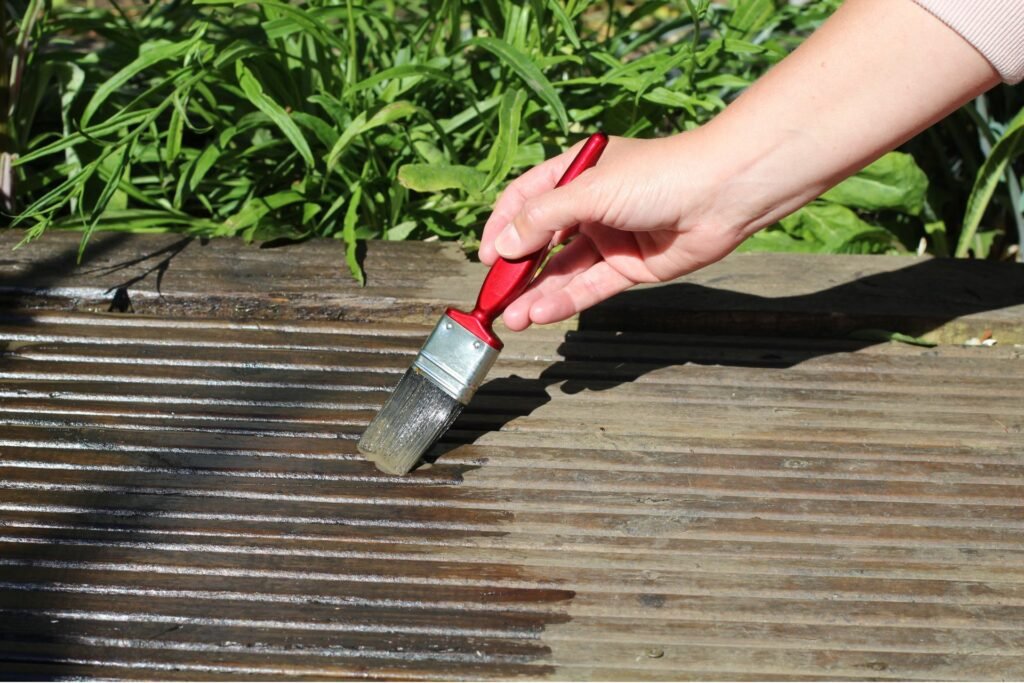
How To Choose The Best Decking Oil
When selecting the right decking oil for your outdoor space, a thorough understanding of various factors and expert tips can guide you toward making the best choice for your deck. Decking oil not only enhances the appearance of your deck but also plays a pivotal role in its protection and longevity. Below, we delve into the essential aspects you should consider and provide top tips to help you select the perfect decking oil.
Factors to Consider Before Buying Decking Oil
1. Wood Type and Condition of Your Deck
The type and condition of the wood of your deck are crucial in deciding the kind of decking oil you need. Different woods absorb oil differently; for instance, hardwoods like teak and ipe require specific oils that penetrate deep to offer protection, while softer woods like pine might need a lighter oil that dries faster. Additionally, the current condition of your deck—whether new, weathered, or previously treated—will influence the type of oil you should use.
2. Climate and Exposure to Elements
The climate you live in and how much your deck is exposed to elements such as sun, rain, and snow are critical in choosing the right oil. Decking oils that are formulated to resist UV rays are ideal for sunny areas to prevent fading, while decks in wetter climates may benefit from oils with mold and mildew resistance properties.
3. Desired Finish and Maintenance Requirements
Decking oils come in various finishes, from natural and matte to glossy. Your preference will determine the look of your deck but also consider the maintenance required. Some oils require frequent reapplication, while others offer longer-lasting protection. Opt for an oil that balances aesthetics with practical maintenance needs to ensure your deck remains in top condition with minimal effort.
Top Tips for Selecting Decking Oil
1. Recommendations for First-Time Users
If you’re new to using decking oil, it’s advisable to start with a product that is easier to apply and maintain. Look for oils labeled as “non-drip” or “fast drying” to make the application process manageable. Additionally, choosing a water-based oil can be a wise option for beginners due to its easier cleanup and less potent fumes.
2. Importance of Brand and Product Reviews
The reputation of a brand and the reviews of its products are invaluable resources. Established brands often offer higher quality and more reliable oils that deliver consistent results. Reading product reviews can also provide insights into how well the oil performs in real-world conditions, how it handles wear and tear, and the truth about its ease of application and longevity.
Choosing the right decking oil involves careful consideration of the type of wood, environmental conditions, desired aesthetics, and practical maintenance needs. By understanding these factors and leveraging first-hand user recommendations and thorough product reviews, you can select an oil that not only beautifies but also prolongs the life of your deck. Remember, the right oil will not only enhance the wood’s natural beauty but also protect it from the harsh elements, ensuring your deck remains a welcoming and durable outdoor space.

Top 5 Decking Oils In Australia
If you’re looking to protect and enhance the natural beauty of your outdoor decking, choosing the right decking oil is essential. This guide will walk you through the top five decking oils available in Australia, providing you with a comprehensive overview of each product, a detailed comparative analysis, and valuable insights to help you make the best choice for your decking needs.
Overview of Each Product
Each of the top five decking oils in Australia has been selected based on their quality, effectiveness, and user recommendations. We will discuss each product’s key features, including pros and cons, provide practical application tips, discuss longevity, and offer a summary of the price range and availability.
1. TimberCare Classic Deck Oil
Key Features: TimberCare Classic Deck Oil is renowned for its deep penetration into wood, providing a long-lasting protective coat that enhances the wood’s natural grain. It’s especially effective against weathering, UV rays, and moisture.
Pros: Offers enhanced UV protection; water-resistant.
Cons: Requires frequent reapplication every 12 to 18 months.
Application Tips and Longevity: Best applied with a brush or roller; two coats are recommended for optimal results. Typically lasts 1-2 years depending on weather conditions.
Price Range and Availability: Mid-range price, widely available in major hardware stores across Australia.
2. DeckMaster Eco Shield
Key Features: DeckMaster Eco Shield is an eco-friendly option that uses natural oils and sustainable ingredients. It’s safe for use around pets and plants.
Pros: Environmentally friendly; non-toxic formula.
Cons: Less resistant to heavy rain.
Application Tips and Longevity: Ideal application involves a single coat with a follow-up after 24 hours. Lasts up to 2 years.
Price Range and Availability: Slightly higher in price due to eco-friendly ingredients, available online and in select local stores.
3. ProWood Lumber Guard
Key Features: Known for its robust formulation, ProWood Lumber Guard is great for high-traffic decks. It includes additives that prevent mold and algae growth.
Pros: Mold and algae resistance; durable finish.
Cons: Longer drying time.
Application Tips and Longevity: Apply with a sprayer for uniform coverage; requires 48 hours to fully cure. Can last up to 3 years with proper maintenance.
Price Range and Availability: Comparable to premium decking oils, available at specialized retailers.
4. AquaDeck WaterSeal Oil
Key Features: AquaDeck WaterSeal Oil offers a unique water-based formula that dries quickly and doesn’t emit strong odors.
Pros: Quick drying; low odor.
Cons: May need reapplication in coastal areas.
Application Tips and Longevity: Two thin coats are recommended; dries within hours, allowing for quick use of the deck. Effective for up to 2 years.
Price Range and Availability: Economically priced, easily found in most hardware stores.
5. Natural Wood Finish Plus
Key Features: This product stands out for its blend of natural oils that provide a rich, glossy finish while still offering substantial protection.
Pros: Glossy finish; enhances wood grain visibility.
Cons: Can be slippery if over-applied.
Application Tips and Longevity: Best results are achieved with a soft brush; reapply annually.
Price Range and Availability: Premium product with availability limited to high-end suppliers.
Comparative Analysis
To help you see the differences between these top decking oils, we will provide a detailed comparison table that includes product ratings, features, application methods, and expected longevity. Alongside the table, you’ll find expert opinions and user testimonials that reflect real-world experiences with these products.
By highlighting the unique attributes and potential drawbacks of each oil, this analysis aims to empower you to choose the decking oil that best suits your deck’s specific needs and your personal preferences.
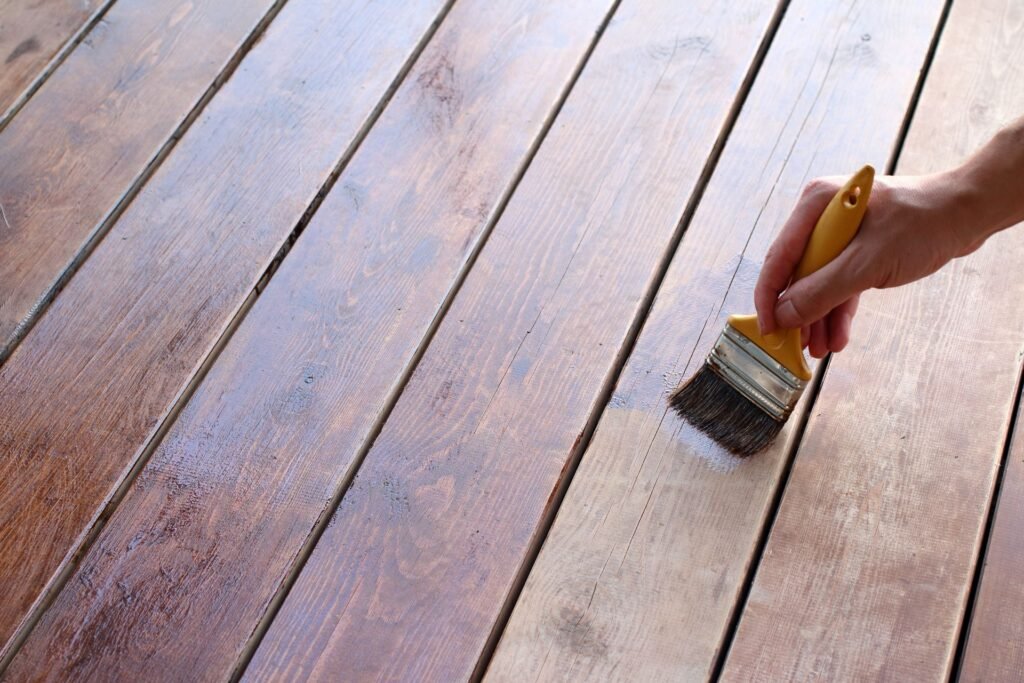
How To Apply Decking Oil For Optimal Results
Applying decking oil is an essential step in maintaining the longevity and appearance of your wooden deck. This guide will provide detailed insights into the preparation and application techniques necessary to achieve optimal results when using decking oil. By following these guidelines, you can ensure that your deck remains protected and looks great throughout the year.
Preparation Steps
1. Cleaning and Preparing Your Deck
Assess the Deck: Begin by assessing the condition of your deck. Look for any signs of damage, wear, or mildew that may need to be addressed before you apply the oil.
Clean Thoroughly: Cleaning is crucial for the oil to penetrate effectively. Use a high-quality deck cleaner to remove dirt, grime, and previous coatings. For decks with mildew or algae, consider a cleaner that contains mildewcide.
Allow to Dry: After cleaning, allow the deck to dry completely. This typically takes 24-48 hours, depending on weather conditions.
2. Necessary Tools and Materials
Decking Oil: Choose a high-quality decking oil suitable for the type of wood of your deck.
Applicator Tools: You will need a brush, roller, or pad applicator. Brushes are great for getting into the grooves and edges, while rollers or pads can make the application quicker on flat areas.
Other Supplies: Prepare rags for wiping excess oil, gloves to protect your hands, and sandpaper to smooth any rough spots on the deck.
Application Techniques
1. Step-by-step guide on How to Apply Decking Oil
Stir the Oil: Always stir the decking oil thoroughly before and during use to ensure a consistent finish.
Test the Oil: Apply the oil to a small, inconspicuous area of your deck to test the finish.
Apply Thin Coats: Use your applicator to apply a thin, even coat of oil. Work in sections and maintain a wet edge to avoid lap marks.
Work Along the Grain: Always apply the oil in the direction of the wood grain. This helps enhance the natural beauty of the wood and ensures better absorption.
Allow to Soak: After application, allow the oil to soak into the wood for the time specified by the manufacturer.
Wipe Excess Oil: After the soak-in period, use a clean rag to wipe away any excess oil that has not been absorbed. This prevents a sticky surface.
2. Common Mistakes to Avoid During Application
Avoid Over-application: Applying too much oil can lead to a tacky finish and extended drying times. Always apply in thin layers.
Don’t Ignore Weather Conditions: Avoid oiling your deck in direct sunlight or during damp conditions. The ideal weather is dry with moderate temperatures.
Neglecting Edges and Ends: Ensure all areas, including edges and board ends, are properly sealed to prevent moisture ingress.
By adhering to these detailed preparation and application steps, you can effectively apply to deck oil and significantly enhance the durability and appearance of your deck. Remember, regular maintenance is key to extending the life and beauty of your outdoor wooden structures.

Maintenance Tips For Decked Areas
Maintaining your decked areas is crucial not only for its appearance but also for prolonging its lifespan. Here’s a detailed guide on how to keep your deck looking great through routine maintenance and long-term care.
Routine Maintenance
1. Cleaning and Re-application Schedules
Regular Cleaning: Keeping your deck clean is the first step in routine maintenance. Sweep it regularly to remove debris and dirt that can scratch the wood. Additionally, a deeper cleaning with a deck cleaner or a mild soap solution should be done at least twice a year. This helps prevent mold, mildew, and the buildup of grime.
Sealing and Staining: After cleaning, it’s essential to check if your deck needs re-sealing or staining. Typically, re-sealing should be done every two to three years, depending on the weather conditions and the type of wood. This not only enhances the deck’s appearance but also protects it from moisture and UV damage.
2. Dealing with Common Issues like Stains and Discolorations
Immediate Action: The key to handling stains and discolorations is to act quickly. For food spills, oil, and grease, use a commercial deck cleaner that is suited for your type of deck material. For more stubborn stains, like wine or berries, a mixture of bleach and water can be applied, but always test it on a small, inconspicuous area first to ensure it doesn’t damage the wood.
Preventive Measures: Using rugs or grill mats under outdoor furniture and BBQs can help prevent stains from occurring. Choose mats that are breathable to avoid trapping moisture underneath, which can lead to wood rot.
Long-Term Care
1. Seasonal Maintenance Tips
Spring: Inspect your deck for any signs of damage such as loose boards or protruding nails. Also, check for signs of rot or insect damage, and replace damaged wood as soon as possible. This is also a great time to clean your deck thoroughly after the winter months.
Fall: Prepare your deck for winter by removing any furniture or planters that can trap moisture. Clearing the deck of leaves and debris will also prevent mold and mildew growth.
2. How to Ensure Longevity and Sustained Appearance
Regular Inspections: Make it a habit to inspect your deck regularly. Look for signs of wear and tear and address them immediately. This includes checking for splintering, warping, or any structural concerns that could affect the safety and aesthetics of the deck.
Choose the Right Materials: If you’re building a new deck or replacing parts of an old one, choosing the right materials can make a significant difference in its longevity. Opt for materials that are known for durability and are suitable for your climate.
Covering and Protecting: Using a quality water-repellent finish can help protect the wood from moisture. During harsh weather conditions, consider covering your deck with a tarp to prevent water accumulation and damage.
By following these detailed maintenance tips for your decked areas, you can ensure that your outdoor space remains beautiful and durable for years to come. Whether it’s routine cleaning or preparing for the changing seasons, a little care can go a long way in maintaining the health and aesthetics of your deck.

FAQs: About Best Decking Oil Australia
Conclusion
Concluding our discussion on decking oils, it’s essential to underscore the significance of selecting the appropriate product to not only preserve but also enhance the appearance of your deck. Each deck is unique, and choosing an oil that suits your specific needs and preferences is crucial. By carefully considering factors such as the wood type, climate conditions, and desired finish, you can ensure your deck remains in excellent condition and continues to be a highlight of your outdoor living space. We encourage you to take the time to assess these aspects to find a decking oil that aligns perfectly with your expectations, ultimately providing long-lasting protection and beauty.
About the Author:
Mike Veail is a recognized digital marketing expert with over 6 years of experience in helping tradespeople and small businesses thrive online. A former quantity surveyor, Mike combines deep industry knowledge with hands-on expertise in SEO and Google Ads. His marketing strategies are tailored to the specific needs of the trades sector, helping businesses increase visibility and generate more leads through proven, ethical methods.
Mike has successfully partnered with numerous companies, establishing a track record of delivering measurable results. His work has been featured across various platforms that showcase his expertise in lead generation and online marketing for the trades sector.
Learn more about Mike's experience and services at https://theleadguy.online or follow him on social media:


